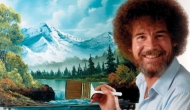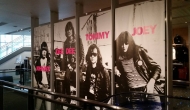Part 2 of a 7-part series. To read part 1, go HERE.
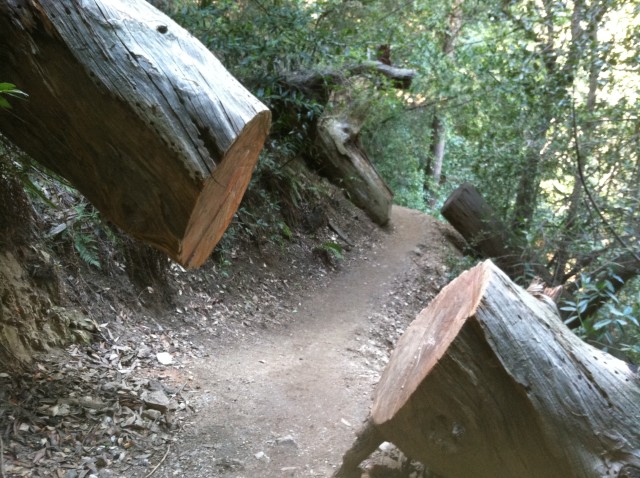
Chantry Flats Trail to Mt. Wilson, 14 mile loop
Elevation Gain: 3,914 feet
Summit: 5,710 feet
We arrived to the Chantry Trail parking lot at 6 a.m. and got the last parking spot. Emphasis on the word “last.” Or perhaps emphasis on “6 a.m.” Either way, the fact that we arose at the ass-crack of dawn, drove twenty minutes on the 210 to Arcadia, hit a Starbucks for tea and breakfast, took the windy road up Santa Anita Canyon, arrived at our destination at 6am, and that still wasn’t early enough to get the proverbial worm… did not bode well.
I thought our first foray into the wilds of the San Gabriels—at 6 a.m.—would be met with the serene sound of woodpeckers and waterfalls punctuated by intermittent silence and the soft shuffling of our shoes. But as we descended down a lengthy paved road toward Sturtevant Falls, at least a dozen Korean hikers in Capilene and Gore-Tex rose behind us like a tsunami, chattering with wild abandon. Sean and I picked up our pace so that we could create enough distance between them and us, us and them, to keep our conversations private, and maybe—just maybe—get a chance to hear the wind through the trees revealing the reason I was here.
About ten minutes after passing a small, picturesque bridge over Winter Creek, we found ourselves surrounded by tall pine trees and broad-leafed oaks that canopied the forest floor. Granite boulders—immovable reminders of eons past—sat old and proud, and a series of cabins dotted the hillside overlooking the creek. We counted on experiencing an ecological treasure trove, but had no idea we’d be walking into a historical goldmine.
These private cabins were built in the 1910s and ’20s during the heyday of outdoor recreation. Yes, there was a heyday. And you thought hiking and camping were current fancies marketed by REI and Backpacker magazine. Silly reader. From 1895 to 1938, millions—yes, millions—of people were hiking, fishing, and even bagging “Wilson’s Peak”—as Mt. Wilson was known back in the day. (Interestingly enough, they weren’t wearing Keen Targhees or the Evap Change Fleece Jacket with Omni Wick Technology. How did they do it?)
According to the L.A. Times, more than 2 million people a year flocked to the San Gabriels and about 140,000 of them hiked 10 miles or more. In 1911, forty thousand hikers and horseback riders passed over the trail just to Mt. Wilson alone. This crazy period of time even had a name to it…it was called “The Great Hiking Era.”
Everybody—their dogs and grandmas included—was hiking. Families, church groups, new couples, old couples, in-between couples, and college students (mostly sororities and fraternities from nearby Occidental and Pomona Colleges) organized day hikes and weekend outings. Pomona College’s Kappa Delta frat house was actually lodged in the San Gabriels. It was built in 1909 but lasted only a mere three years before burning down in 1912. It would be jolly fun to say it burned down in a frenzied bacchanalia, but alas, it fell victim to one of many forest fires that would ravage the mountains above the metropolis. Not so jolly.
Although we don’t know what may have gone on at Kappa Delta, we do know that the San Gabes certainly had their share of soirees. Dozens of “resorts,” as these clusters of cabins were called, popped up all over the mountains. Santa Anita Canyon alone was home to five of them. Sturtevant’s, which was only a few miles from where we stood, didn’t offer a salt scrub and body wrap (that we know of), but it did have an open-air dining pavilion as well as croquet and tennis courts, and it regularly threw masquerade parties and dances. And because everyone needs to reaffirm both to themselves and those they’re with as soon as possible that they are, in fact, having a good time, there were dark rooms available for photographers. The 1920s’ Instagram.
As for the cabins that stopped us in our tracks, they have always been privately owned and like Sturtevant’s, accessible only by foot. Supplies then, like now, were carried by pack mules from the only remaining pack station in existence today, which stands at the end of the Chantry Flats parking lot. Pretty amazing.
After the cabins, we took the junction with the San Gabrielino Trail and headed up to the top of Sturtevant Falls, where the narrow trail was carved into the rocks. Until this point, we had been walking on flat and gentle land. But now, the real hiking began to kick in. We were headed a thousand feet up to Spruce Grove Campground, where we planned a pit stop to consume of our peanut butter sandwiches. We finally found ourselves alone, but just as we began indulging in our newfound serenity, we encountered a new group: the trail runners. One after another they passed us, their waists wrapped in belts of water bottles like ammunition, shirts emblazoned with their latest 10k and marathon achievements.
It’s not that I don’t like trail runners, I love them. Heck, I am one of them…when I’m not hiking. But when I am hiking, with a totally unnatural amount of weight on my back, the last thing I want to see is a runner—high on endorphins—prancing past me in her running skort and Asics, light on her Tinker Bell feet. Yes, I was jealous of their runner’s high. I had yet to experience anything close when hiking.
Plenty of research has shown that after 30 minutes of steady, moderate to vigorous exercise, our bodies release endorphins, wonderful little hormones that activate the body’s “feel good” opiate receptors, enabling us to push past our normal threshold.… These little guys make us feel invincible and invigorated, which explains why we can run marathons and do triathlons and bike-a-thons. But according to MayoClinic.com, you needn’t engage in heavy physical activity to chase the dragon: “even activities like hiking in nature can promote the release of endorphins.” I guess mine are fickle friends, wanting to party only during bouts of high-intensity exercise, not extremely long bouts of slow low-intensity exercise—indoor or out. Can you blame them? I mean, what would you rather do: jog for an hour or do three solid hours on a StairMaster slowly, with one third of your body weight on your back? Yeah, I thought so.
About an hour later, we hit our rest stop: Spruce Grove Campground. A middle-aged Korean couple sat quietly eating their lunch while a group of single twenty-something dudes in flannel nursed a smoldering fire by their tents, not quite able to let go.
We took off our packs, stretched, ate, checked our map, and used the chemical toilets surprisingly stocked with a plentiful amount of toilet paper. (Okay, so “chemical toilet” is the official name for this type of potty—I know because I care enough about you to be precise, so I looked it up. It differs from a pit toilet in that it uses the familiar blue dye to deodorize, whereas a pit toilet uses nothing and forces non-Appalachian men and women to breathe through their mouths. Chemical toilets are the preferred toilet when a great deal of human traffic is expected. They are typically found at outdoor festivals, on airplanes, and in wilderness areas. They are also known as port-a-potties, port-a-johns, or in the U.K., port-a-loos. However, instead of a hard plastic frame like the one that usually surrounds a port-o-potty, the campground chemical toilet had a wooden structure that was piney and cabinesque. It was a nice touch. It had – dare I say- ambience.)
The weather was getting warm; the forecast had said 80. It felt fine sitting in the shade, but as we got moving again, I could feel the sweat evaporate from my Columbia Omni-Wick shirt (yes I did). As we headed toward our final ascent, we found ourselves alone again on a series of inevitable and annoying switchbacks. (For the uninitiated, a switchback is the twisty part of the trail with lots of bends going steeply uphill.) This quiet, intense time was perfect for a revelation as to why I was putting myself through this torture. However, if a message was being transmitted by the universe, I would have been unable to hear it over the sound of my whining.
To help ease my pain, Sean did what any good man would do: He made me laugh. With a voice like Eeyore from Winnie the Pooh, he said one word, switchback, as we made a turn uphill. And I laughed. He did it again on the next one, and on the next. Then I was saying it, making him laugh. If you were hiking past us, it probably would have seemed like we had day passes from a mental institution. But ironically, our temporary insanity was the only thing keeping us sane during the monotony of lumbering along uphill, turn after turn after turn.
I made us stop every 15 minutes to rest our bodies and drink our EFS – Electrolyte Fuel System. On any long endurance event, your body needs more than just water; your muscles need energy from carbs, and they also need amino acids to help prevent breakdown of tissue. That’s where EFS comes in. In fact, drinking nothing but water might send you on a date with hyponatremia, which might be a lot like a date with Justin Bieber or Paris Hilton: Your cells will swell and then you can get tired, nauseous, throw up, become dizzy, confused, weak, cramp, get a headache, have a seizure, or all of the above. Fatalities are rare, but such symptoms are more common than you would think. In the summer of 1999, of 44 hikers in the Grand Canyon requesting medical attention, 7 were seen with hyponatremia: 3 of them had grand mal seizures, 2 had other major central nervous system disorders, and 2 had minor neurological symptoms. To tell you the truth, I wasn’t really worried about hyponatremia. I just wanted to do everything I could to help my body make it up to the top and back down to the car without any kind of embarrassment.
Switchback stopped being funny, so we walked along in exhausted silence until we reached a long ramp leading up to a parking lot. Did we make it to the top? Seriously, we couldn’t tell. It seemed surreal to pop out of our forest manhole—sweaty and slightly delirious—and into civilization without much of a transition.
We thought arriving at our first big summit would be something monumental—you know, the labored last steps, the reaching of the hands for the plaque that marks the elevation, the posting of the American flag as it flaps in the wind, a musical score playing as we reached the top (I thought Moby’s “God Moving Over the Face of the Waters” would be epic). But we got none of that. Instead, there was a 12-year-old boy sipping a Big Gulp, an amalgam of sightseers who had lazily driven to the top, a couple of observatory workers discussing…work stuff, and the trail runners who had passed us earlier stretching out and eating protein bars. Talk about anti-climatic.
We had worked up a hearty appetite and looked forward to eating at the Mt. Wilson Observatory’s Cosmic Cafe – named so because Mt. Wilson is the astronomical center of Southern California. It is home to some of the most famous telescopes in the world, including the 100-inch Hooker telescope responsible for Edwin Hubble’s discovery that the universe is expanding. But like the summit, the cafe couldn’t be located so we asked the workers discussing work stuff where everything was. The summit, they told us, was near the snack bar and while it wasn’t the highest point on Mt. Wilson, it was the point designated as the summit by the park service. (The actual summit isn’t accessible to anyone. It sits in a secured area near a radio tower.) As for the Cosmic Cafe, they told us it was closed for another two weeks. But we quickly spun our misfortune into an opportunity.
The portable, lightweight backpacking stove was carefully removed from Sean’s backpack like a diamond from a velvet bag. It was time to break it in. We opened up a bag of Backpacker’s Pantry Katmandu Curry, an “authentic Nepalese curry with rice, lentils, and vegetables,” whose ad on the back read, “This will conjure up an image of being in the Himalayas eating Dahl Bhat.” Oh yes, I laughed with the laugh of a pompous Englishman. The Himalayas, Dahl Bhat. Good ol’ times. Of course I’d never been to the Himalayas or had Dahl Bhat—that I knew of. And, after reading Into Thin Air, I’m not so sure eating lentils in the Himalayas is an image I’d exactly want to conjure. But, anyway, it sounded exotic and adventurous, just like us. We poured it into our little pot and less than five minutes there we were, just the two of us, eating a piping hot lunch somewhere near the top of Mt. Wilson, the sounds of our metal spoons clanking against our mess kit bowls, creating our own simple soundtrack to the summit.
Our return route began with a descent down a different trail: the Mt. Wilson Toll Road, and to my relief, no switchbacks.
Now most of us know that going uphill on anything, a mountain, stairs, StairMaster, treadmill, can provide all kinds of benefits (like a great butt and legs) and helps increase our cardio fitness levels. But did you know that going downhill actually helps lower your blood sugar? For reals. A study from Austria in 2004 reported that uphill hiking cleared fats from the blood faster but downhill exercise reduced blood sugar and helped glucose tolerance. Hiking in either direction lowered bad cholesterol.
But going up or down this trail in 1889 wasn’t recreational for everyone. Nobody was thinking about their LDL and HDL, triglyceride, or glucose levels as they hauled up 3,700 pounds of equipment to get the first telescope mounted on Wilson’s Peak. That feat in and of itself should put all who whine up this road to shame. (Yes I was shamed.)
And speaking of whine up this road, wine was the very reason this road came into existence. Don “Benito” Wilson was many things in his lifetime—a landowner, mayor of Los Angeles, a California senator, and a wine maker. He was so guided by his passion for vino that he blazed this trail in search of suitable wood for his wine casks. He was ultimately disappointed by the “poor quality” of pine and cedar on the mountain and abandoned his endeavor, never to return to the path -or the mountain- that now bears his name. At least we can thank his ego and affinity for alcohol for helping get that telescope up the hill and for providing countless hours of recreational fun for the hikers of Southern California. Cheers, Benito!
We weren’t long into our descent before I gained incredible clarity about an issue that had been bothering me for some time: The proper usage of “downhill” as metaphor. Was “downhill” good? Bad? There’s the negative: “Things were going great, but now it’s all downhill from here,” and the more positive: “It was an uphill battle, but it’s all downhill from here.” As we had shifted the muscular focus from our glutes and hammies to our quads and shins, going downhill was positively glorious (hence, the second phrase would be applicable)…in the beginning. However, after about 2 hours of descending, I can now share with you the correct and proper usage of “going downhill.”
Going downhill is like waking up next to a highly unattractive person the morning after a melange of clever clothing, good hair, and lots of alcohol at a nightclub; it’s like standing in front of a mirror at home with buyer’s remorse after the high of good lighting and 120 BPM inside the fitting room of an overpriced clothing store (ladies, I’m talking to you); it’s like the rock in your gut after eating half a chocolate lava cake that once sat like a siren on the ocean of your dinner table. To boil it down to one word: deceitful. At one point it all seemed good, but you couldn’t be more wrong.
With diabetes far at bay, somewhere along the Winter Creek Trail I was begging for flat land. No uphill, no downhill, just flat steady land. But if I had to, I would have swigged a shot of uphill without a chaser. Even Sean, my even-tempered husband, quiet and stoic, began complaining of shin splints. No sooner had we begun indulging in our misery, than our grousing party of two was crashed by a mountain biker laboring uphill.
He was followed by another and another, each looking progressively more exhausted than the last. It was hard enough going up Mt. Wilson on legs and feet alone. I didn’t even want the pain of imagining the pain it would take to cycle up this trail. My misery was enough.
The Great Hiking Era mountaineer Will Thrall once said, “There is no exercise so beneficial, physically, mentally, or morally, nothing which gives so much of living for so little in cost, as hiking our mountain and hill trails and sleeping under the stars.”
I really did want to feel that same deep connection to these mountains as Thrall, to fully understand—not just intellectually but experientially—what drew people to these laborious hiking expeditions. Of course the trees and the rocks and the streams and the views were intoxicating, but for me, right now the physical and mental torture far, far outweighed what lay deeper.
I served the question to Sean, “Why are we doing this again?” To which he lobbed back “To make sure we reach the top of Whitney. Isn’t that what you wanted? To climb Mt. Whitney?” Oh, yeah. That’s what I wanted. Love-15.
Actually, what I wanted was a magical parting of the trees, a shaft of sunlight giving birth to flowers in larger-than-life Technicolor. Where, paralyzed with awe, I could do nothing more than sit down, overwhelmed at the intensity of it all, and shake my head as I realized how I have lived my life for this one moment. I would breathe in the answer to life, to our existence, and then share it with the world on NPR.
But instead, the only real lessons I learned on this trip sounded like Raymond Carver short stories: “Sometimes the Summit Is Hard to Find” and “Going Downhill Is Harder Than Up.”
We made it to the concrete path where we had started our sojourn. Legs like noodles, backs annoyed with the packs stuck on them. I should have felt a sense of elation that this pilgrimage was ending, but instead, I was filled with defeat. The uphill slab glared menacing and hot like the entrance to hell. I would have sworn that its sole purpose was simply to break me. I stood there looking at it as if I could never surmount it.
Adding insult to injury were the droves of hikers just beginning their descent with fresh-faced grins. There were girls in Ugg boots and some in flip-flops. Kids hiking with their parents. Dogs trotting alongside owners. Groups of twenty-somethings with beer in their day packs. And then it occurred to me: No one was hiking to the [mythical] summit. It was the afternoon… These yahoos weren’t going any farther than the waterfall, if even that far! Suddenly, I felt proud.… I had woken up early, I had just climbed to the top and back, and these guys are just starting?!
I used that angry energy and made that hill my bitch. Next thing I knew, we were at the car. We took off our packs and got inside to sit down. I took off my boots and let my throbbing feet air out then enjoyed an ice-cold recovery drink from the cooler. Sean turned on the A/C. I had made it back in one piece, without embarrassment or hyponatremia.
My sense of accomplishment carried me all the way home. Mt. Wilson, you didn’t break me, love. While your history was fascinating and fun, you were a pain in the butt, hamstrings, quads, and shins; you were crowded, and your summit was, well, a real let-down.
By the time we got home, I was ready for our next hike: Cucamonga. A challenging 11.6-mile out-and-back hike with 4,300 feet of elevation gain to the 8,859′ summit.
I was determined not to let Cucamonga break me. And it didn’t. But it did break my heart.
Kerry Lambert
Kerry Lambert has written over two decades for television, film, and the internet. Some of her diverse credits include “Time Warp” and “Raging Nature” for the Discovery Channel, “The Secret Life Of…” for Food Network, and “Three Thieves” for The Cooking Channel. She has written about science, nature, filmmaking, fitness, travel, and health – not necessarily together- for a myriad of different websites as well as directed and produced for stage, tv, and film. She is a regular contributor to Shea Magazine and Discover Outdoor Life. She enjoys teaching yoga, running, hiking, and raising two beautiful daughters. For more info on Kerry visit her at http://kerryannlambert.weebly.com or click on the "web" link below.


![Scenes from Washington Square Park - NYC [PHOTOS]](https://sheamagazine.com/wp-content/plugins/special-recent-posts-pro/cache/MjAwMTAwbm9JTUdfNDA1Mg==.jpg)

![Let's Go to Chinatown, Shall We? [PHOTOS]](https://sheamagazine.com/wp-content/plugins/special-recent-posts-pro/cache/MjAwMTAwbm9jaGluYXRvd24tMi1idy0=.jpg)
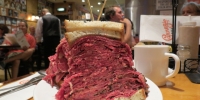
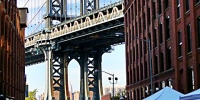
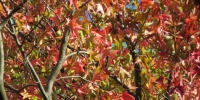


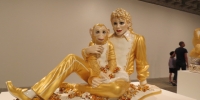
![Sunset - Pelham Shore Park - Long Island Sound [PHOTOS]](https://sheamagazine.com/wp-content/plugins/special-recent-posts-pro/cache/MjAwMTAwbm9JTUdfMzM3MC1SRVNJWkU=.jpg)
![Let's Go to the Empire State Building - Shall We? [PHOTOS]](https://sheamagazine.com/wp-content/plugins/special-recent-posts-pro/cache/MjAwMTAwbm9JTUdfMzkxNjE=.jpg)




